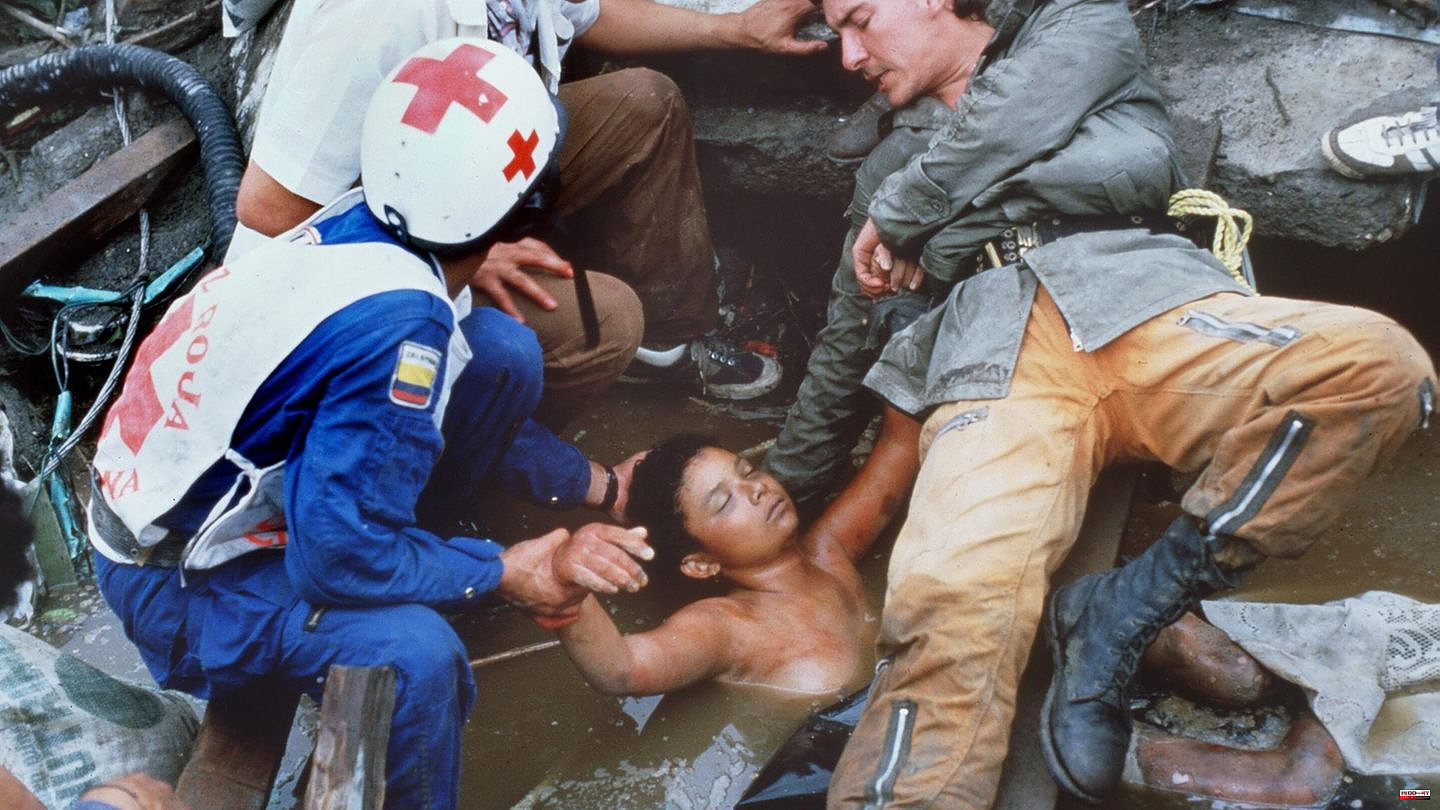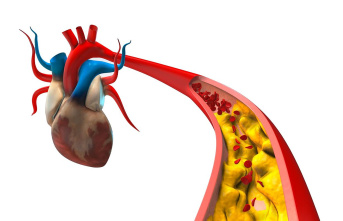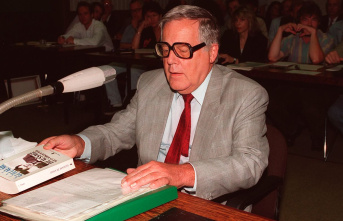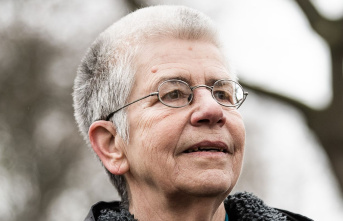Three months before the disaster, the Nevado del Ruiz volcano in the Manizales region of Colombia had already started spewing smoke and ash. On that fateful day, November 13, 1985, it spewed around 35 million tons of glowing lava and rock, so that around a tenth of the glacier on it and the ice and snow masses on the surrounding mountains began to melt. A huge tidal wave of mud, stones, water and ash made its way into the valley at six to twelve meters per second. Four cities, including the small town of Armero with 29,000 inhabitants, around 150 kilometers northwest of Bogota, were simply swallowed up by the gigantic mudslide.
It was around 11:30 p.m. when most of the people in their homes were hit by the disaster. The authorities had warned the population, but only advised them to stay indoors and close all windows. Survivors told reporters that in the late afternoon and early evening in Armero, a priest and radio announcer reassured people that they were not in danger. A massive misjudgment.
The mudslide hit the small town relentlessly. The consequences were devastating. Around 85 percent of the city area was flooded with thick, heavy mud, roads, houses and bridges were brutally destroyed. Most residents had no chance to escape the force of the lahar, the flow of mud and debris that followed the eruption. More than 23,000 people in Armero and surrounding areas lost their lives that night. Despite the extent of the disaster, it took hours before rescue efforts began. Survivors had to wait an agonizingly long time to be rescued.
Just like the girl Omayra Sánchez. The 13-year-old student also caught the eye of French photojournalist Frank Fournier, who arrived in Bogotá from New York two days after the eruption. He had to drive five hours by car and walk two and a half hours to get to the disaster area. A peasant escorted him to the girl, telling that she had been trapped under his ruined house for three days. She was stuck in a meter high puddle with only her small head sticking out. Her feet kicked into bodies in the mud below, which she said could only be the bodies of her father and aunt. "Dawn was just breaking and the poor girl was in pain and very confused," the photographer recalled speaking to the BBC.
Red Cross volunteers and local residents had repeatedly tried to pull her out, but something under the water had trapped her legs, preventing her from moving. Meanwhile, the water surrounding the child was rising higher and higher, due in part to the ongoing rains. A pump was needed. But that was missing. Like so many things.
The rescue efforts, they were more than chaotic. Volunteers and other helpers later reported missing manpower, helicopters, ambulances, expertise, medicines and essentials like stretchers, shovels and cutting tools to make their way through the rubble. They also reported shortages in utility lines and slavish compliance that hampered rescue efforts.
Red Cross rescue workers have repeatedly appealed to the government to provide a pump to lower the water level and other resources to get Omayra Sánchez out of her plight. The volunteers, mostly firefighters and others from the surrounding communities, tried desperately to help the little girl. Once they tried to lift the aunt's body away with a rope hanging from a helicopter. But nothing they did brought the girl an inch more freedom.
But Omayra didn't give up, fought bravely and kept talking to the helpers and journalists. "What day is it today?" she asked once. When she was told it was Friday, she was shocked: "Oh no, I'm missing my math test at school. I'll have to repeat the school year". Apparently she was not aware that her school was no longer standing, that most of her classmates were dead, that she herself was in mortal danger. As the minutes and hours passed, her small body grew weaker and weaker. Her chalk-white hand, completely shriveled and softened skin, and her almost completely bloodshot eyes with huge, dark circles under them gave only a hint of the agony to which the rest of her small body was subjected. That Friday she said to the men who tried in vain to help her, "Now just get some rest and then come back and get me out." One of the reporters later wrote: "We left crying, angry, almost hating God, people and nature."
By now, Omayra's fate had become a symbol of a whole catastrophe. Her photo went around the world. "Please save Omayra," was the headline on the front page of the Bogota newspaper El Tiempo. There were similar headlines around the world. When a helicopter with the long-awaited pump was ready for take-off at Bogota Airport on Saturday morning, it was already too late. The girl left the last strength. At around 9:45 a.m. she fell backwards into the cold water. One arm, her nose, her mouth and one eye remained above the surface of the water. Someone covered her with a blue and white checked tablecloth.
A photo of her taken by Frank Fournier was voted Press Photo of the Year in 1985. "As I was taking the photos, I felt completely powerless with this little girl facing death with courage and dignity. She could feel her life coming to an end. I felt like the only thing I could do was to give an adequate account of the little girl's courage, suffering and dignity and hope that this would move people to help those who had been saved and could be saved, I felt that I had to share what this little girl went through." Omayra Sánchez died on November 16, 1985, three hours after his arrival. Her mother and brother escaped alive.
After the disaster, Armero was declared a cemetery by the authorities because it proved impossible to salvage around 17,000 dead from the up to 20 meter high layer of mud. The place was rebuilt some distance away. Today only a gas station and the remains of a few buildings remain as reminders that there was once a town here.
Sources: BBC News, History Channel, Stern Archive, DPA












